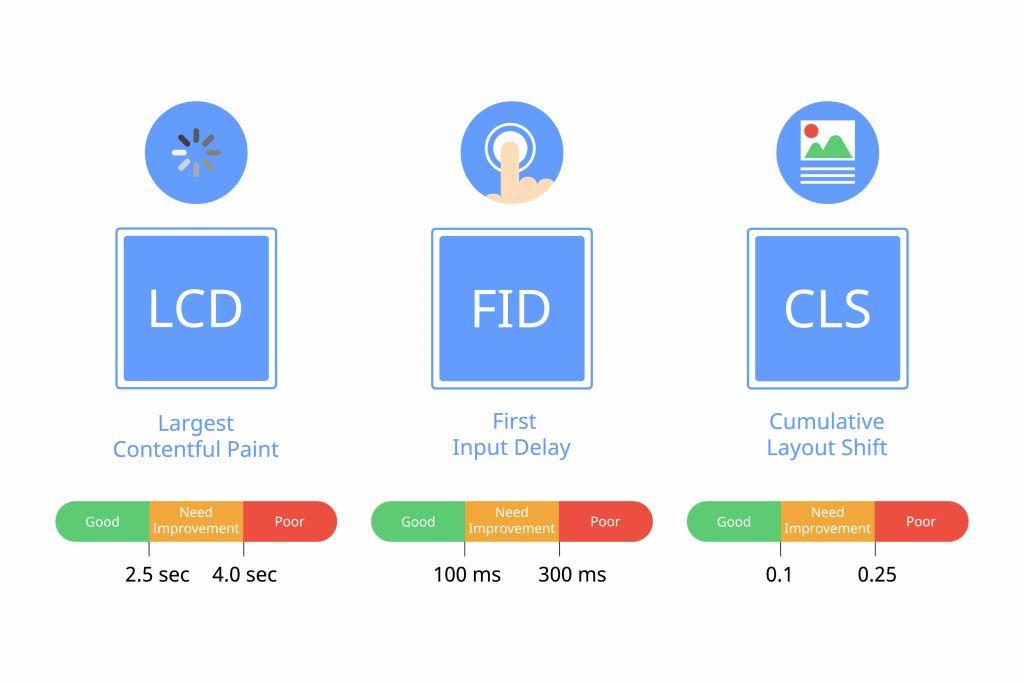
In the ever-changing world of search engine optimization (SEO), staying ahead of the curve demands a keen understanding of the latest best practices. One of the most pivotal advancements in recent times is Google’s introduction of Core Web Vitals in 2024.
These vitals include First Input Delay (FID), Largest Contentful Paint (LCP), and Cumulative Layout Shift (CLS). They represent crucial elements that Google deems vital in a webpage’s overall user experience.
Whether you’re an SEO veteran or a newcomer to the field, this article is your guide. It will provide a comprehensive overview of these vitals, exploring their nuances and influence on your SEO success.
Table of Contents
The Core Web Vitals
Here are the core web vitals:

1. Largest Contentful Paint (LCP)
LCP computes the time it takes for the largest content element (video, image, or text block) to load on a page. Ideally, these elements should load within 2.5 seconds of a visitor opening a page on your website.
To achieve an optimal LCP score, you should improve your website’s technical SEO aspects. This includes server response times, image optimization, and lazy loading.
You can improve server response times by using a reliable hosting provider and implementing server caching. On the other hand, you can optimize images by compressing and using appropriate formats.
Lazy loading ensures images only load when they enter a user’s viewport, reducing the initial load time.
2. First Input Delay (FID)
FID calculates the time from when a user first interacts with your page to when the browser responds. A good FID score is less than 100 milliseconds. Anything more than that leads to a poor score, which affects your SEO health.
Consider, for example, an eCommerce site. Slow loading speed can cause a delay in menu responsiveness, leading to a poor FID score. Such a score could lead to higher bounce rates and, ultimately, a decrease in your site’s search engine rankings.
To improve your FID score, minimize the use of heavy JavaScript execution. This is due to JavaScript’s potential to block the main thread, preventing users from interacting with your page.
Splitting your JavaScript into smaller, asynchronous tasks allows the browser to remain responsive and process user interactions quickly.
3. Cumulative Layout Shift (CLS)
CLS computes the unexpected shifts in the layout of visual page content that may negatively affect user experience. For example, an ad suddenly pushing the text down when a user’s reading an article can result in a high CLS score.
A well-optimized website should have a low CLS score of less than 0.1 to achieve visual stability. One way to get a low score is to include size attributes on your images and video elements. This helps the browser allocate the correct space while the page loads.
Also, avoid inserting content above existing content unless it’s in response to user interaction. This ensures your page layout doesn’t shift unexpectedly as new content loads.
Following the best practices shared for each of the vitals can greatly improve your SEO performance.
How Core Web Vitals Influence SEO Performance
The introduction of Core Web Vitals has added a new dimension to SEO. Here’s how they influence SEO performance:
- User experience – Pages that load quickly, respond to user interactions promptly, and provide a stable layout are more likely to engage users. This can reduce bounce rates and increase time spent on the page.
- Ranking factor – Google uses Core Web Vitals as part of their ranking criteria. This means that if your website excels in these metrics, it could rank higher in search results.
- Technical SEO – A well-optimized site that scores well on technical SEO metrics is more likely to be crawled and indexed efficiently by search engines.
- Mobile experience – A site that performs well on mobile devices can improve its search rankings.
- Page speed – A site that loads quickly and smoothly is likely to score well on core web vitals, enhancing its SEO performance
Mastering Core Web Vitals can significantly enhance your SEO performance. This can lead to a superior user experience and boost your search rankings.
Conclusion
Core Web Vitals are critical metrics that directly impact your website’s user experience and, consequently, your SEO performance.
By understanding what each of these vitals signifies and how to optimize them, you can enhance the user experience on your site. This can boost your search rankings and drive more traffic to your site.
Remember, a well-optimized site isn’t just about the content you offer but also about how quickly and smoothly users can interact with that content. So, keep a close eye on your Core Web Vitals to improve your users’ website experience.
Chris Mcdonald has been the lead news writer at complete connection. His passion for helping people in all aspects of online marketing flows through in the expert industry coverage he provides. Chris is also an author of tech blog Area19delegate. He likes spending his time with family, studying martial arts and plucking fat bass guitar strings.